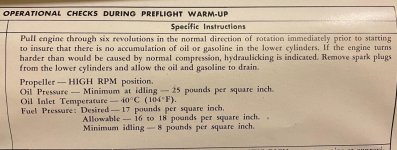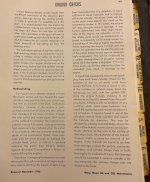I saw my first cut-away radial engine about 65 years ago. I loved it. It was turning slowly and I could see exactly how it worked. A complete mystery before that.
Fast forward about 60 years and I'm with my nephew Steve at a fly-in. Many of the hangars had displays, one of which was a radial engine cut-away. As we walked to the next hangar I explained why all radial engines have an odd number of cylinders.
Exactly 17 seconds later we entered the next hangar to see a cut-away of one of the few EVEN cylinder radial engines!
A four stroke radial needs odd numbers of cylinders to give an even firing intervals. It also makes the drum cam system engineering much simpler.
Generally four stroke engines having even numbers of cylinders arranged radially are commonly known as "fan configuration" as there are usually sufficient other differences to make the distinction worthwhile. There were some very odd configurations and arrangements built that seriously beg the question "Why?". Such as irregular angular spacing of the cylinders. Vibration control I presume.
The common radial configuration has certain inherent vibration issues which can be very destructive if appropriate design precautions aren't taken. For many year radial engines were restricted to speeds below the first critical vibration frequency for this reason.
Bristol and Curtiss both built even number cylinder radials. Both had overhead camshaft valve operation so individual drives had to be provided. They designed as multiple V4 engines around a common crankcase, true radials, not fan engines. Theoretically this has considerable advantages in vibration control allowing high speed running. Even firing intervals result from firing cylinders on each bank alternately.
Bristols Hydra was a 16 cylinder two row engine. Running at around 3,700 rpm the prototype produced nearly double the power of the similar size Mercury. As ever with aircraft engines full development was expected to considerably increase power. It worked well enough but suffered vibration problems which would need a crank re-design with a centre main bearing so was abandoned as the sleeve valve motors were clearly going to be a simpler proposition with much more development potential.

The Curtis Chieftain used a similar OHC two row design but only 12 cylinders. Similar capacity to the Hydra but less powerful and slower running.

Armstrong Siddeley went all in on the multi bank OHC idea with several prototypes and design studies.
Albeit mostly with conventional odd numbers of cylinders per row.
Hyena - 3 rows of 5 cylinders, Terrier - 2 rows of 7 cylinders, Deerhound - 3 rows of 7 cylinders, Wolfhound - 4 rows of 7 cylinders, Boarhound - 4 rows of 6 cylinders, Mastiff 4 rows of 9 cylinders.
Dog Triple-Row Aero-Engines | Armstrong Siddeley.
Despite the issues with practical implementation the concepts must have been considered promising enough for Rolls Royce to apply considerable pressure on the Air Ministry resulting in Armstrong Siddeley not only being told to stop work on such designs in 1941 but also being instructed to hand over all design data and records to Rolls Royce. Who promptly destroyed the lot.
Clive











